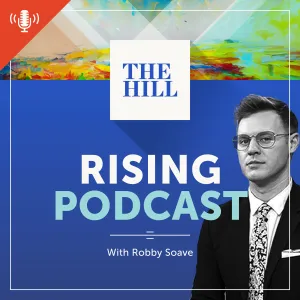1 thing can ensure your wage gains aren’t lost: productivity growth

The March U.S. jobs report revealed that, in addition to strong growth in nonfarm payroll employment, average hourly earnings increased by 3.2 percent over the past 12 months.
Although that was less than the 3.4-percent rate posted in February and also below market expectations of a 3.4-percent gain, wage growth is nonetheless showing signs of life. Wage growth has now matched or exceeded 3 percent on a year-over-year basis for eight straight months.
{mosads}In many cases, wage gains can be healthy and helpful to the real economy since they drive consumer spending, which represents a large portion of projected economic growth.
At the same time, accelerating wages often coincide with late-cycle expansions and can be a threat to corporate profitability, which raises concerns about the sustainability of an economic expansion or a bull market.
As wages continue to rise, there is a rising chance that cost pressures will squeeze profit margins, reversing the decade-long bull market in stocks and foreshadowing a recession.
However, one cannot look at rising wages alone when evaluating the recession risk factor. There are multiple factors that can keep an economic expansion alive throughout a period of rising labor costs.
Concerns around the impact of rising wages on the U.S. economy are the most valid when accompanied by a lack of productivity gains, a slowdown in revenue growth at companies and/or a misstep in Fed policy.
The impact of productivity and monetary policy
The recipe for a robust economy is productivity growth sufficient to keep unit labor costs at a reasonable level. Former Fed Chairman Alan Greenspan, for example, often pointed to productivity growth as a major contributor to the strength of the economy during his tenure. Full employment and rising wages can coexist with economic expansion if, and only if, productivity improves.
The U.S. economy has been starved for productivity growth in the post-financial crisis period. Productivity growth troughed more recently in mid-2016 at -0.3 percent on a year-over-year basis and has averaged just 1.3 percent during the current recovery period.
This is largely because the Fed’s “financial experiment” of 0-percent interest rates and quantitative easing led to a shift in corporate behavior. U.S. companies, in the aggregate, focused on re-leveraging with cheap money to engage in mergers and acquisitions, buying back stock and increase dividends. While this was a boon for holders of financial assets, it was less so for the real economy and labor.
More recently, there have been signs that the forces that have constrained productivity growth may be waning. Spurred by incentives for capital expenditures, reductions in regulations and the benefits of tax reform, companies accelerated capital expenditure spending during 2018.
Consequently, we are seeing more consistent improvements in productivity for the first time since the initial recovery following the financial crisis. The fourth quarter rate of 1.8 percent was the second-highest reading in the past nine years, and, more importantly, a rolling four-quarter average ending in December hit a record six consecutive quarters of above 1.0-percent productivity in the post-crisis period.
The impact on the equity market due to the change in Fed policy may also bode well for productivity gains. For many years, we experienced extraordinary monetary policies that likely distorted indicators.
As long as interest rates remained near zero, investors sought returns in the stock market, passive investing strategies attracted record assets, and stock selecting fell out of favor.
Now, the other side of free money is in play. The Fed’s increase in short-term rates from the zero-bound level has significantly reduced incentives for borrowing and repurchases, causing some companies to revert to investment mode.
Companies are thus rewarded for investing in growth, and productivity gains cannot be far behind. However, not all companies will benefit equally, and the companies that managed their balance sheets prudently and deployed capital into expansion-sustaining profit growth throughout this cycle will be best positioned to outperform over the long term.
Wage gains combined with declining revenue growth
{mossecondads}Another way the U.S. economy could be threatened by accelerated wage gains is if we see an abrupt slowdown in top-line growth. While there are a number of reasons, foreseen or unforeseen, as to why this may occur, it is clear that a rise in labor costs would lead to compression of profits at companies if revenue growth does not keep pace.

This type of dislocation could be driven by macro factors or geopolitical risks and end up impacting the full market, or we may only see specific industries or companies suffer from a lack of innovation or competitive positioning. What is clear is that correlations among stocks are breaking down, and this trend will be amplified by rising wages.
All told, rising wages traditionally act as a net positive for the real economy but could prove menacing for those companies that relied on the largesse of the Fed instead of investing in improving their productivity and competitive positions.
James Camp is the managing director of fixed and strategic income for Eagle Asset Management.
Copyright 2023 Nexstar Media Inc. All rights reserved. This material may not be published, broadcast, rewritten, or redistributed. Regular the hill posts












